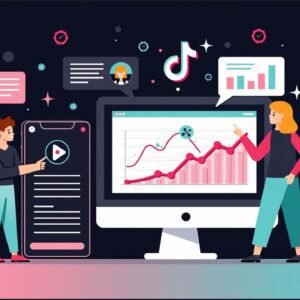The Best AI Tools to Save Time in 2025 — And When to Hire a Real Human
In today’s fast-paced work environment, efficiency boosting technology is changing how we work. AI productivity tools help make tasks easier, automate repetitive work, and boost productivity.
Smart automation software is key for many businesses. It helps save time and use resources better. But, knowing when to use AI and when to call in a human is also vital.
Key Takeaways
- Understanding the role of AI in boosting productivity
- Identifying tasks that can be automated with AI
- Recognizing AI’s limits and the need for human help
- Strategies for balancing AI and human resources
- Best practices for using AI productivity tools
The AI Productivity Revolution
The arrival of AI tools has changed how we work and live. As we face the challenges of today’s jobs, AI’s role in boosting productivity is clear.
AI is now a big part of our daily tasks. It automates boring and time-wasting jobs. This lets professionals dive into more important and creative tasks.
How AI is Transforming Daily Workflows
AI brings efficiency and accuracy to our work. Automated scheduling tools help plan meetings and use resources better. They cut down on work for employees. AI also analyzes huge amounts of data fast, giving insights humans would take longer to find.
Businesses can run smoother and faster with AI. They can quickly adapt to market changes.
Setting Realistic Expectations for AI Tools
AI tools have great promise, but we must be realistic about what they can do. AI is meant to help us, not do everything for us.
Knowing AI’s strengths and limits helps us use it better. This leads to big improvements in work efficiency. The goal is to use AI where it adds the most value, alongside human skills.
In summary, AI is changing the workplace. By understanding AI’s impact and setting realistic goals, we can maximize its benefits. This way, we can achieve better productivity.
The Best AI Tools to Save Time in 2025
In 2025, businesses and individuals are using AI tools to make their work easier and more efficient. The right AI tools can cut down on time spent on simple tasks. This lets people focus more on creative and strategic work.
Content Creation and Writing Assistants
AI tools for content creation and writing are changing how we write. They help with idea generation and proofreading.
Text Generation and Editing Tools
Tools like AI Writer and WordLift make creating content fast and easy. They can write text based on prompts, suggest improvements, and edit.
- Automated content generation for blogs and social media
- Advanced grammar and style checking
- Research assistance for content creation
SEO and Research Automation
AI tools also help with SEO tasks and research. SEMrush and Ahrefs are great for optimizing content and analyzing competitors.
- Keyword research and optimization
- Content audit and gap analysis
- Technical SEO audits
Visual Content Creation Tools
Visual content is key for engaging audiences, and AI makes creating it easy. You don’t need to be a designer.
Image Generation and Editing
Tools like DALL-E and Canva lead in AI-powered image creation and editing. They let users make custom images and edit others easily.
“AI-powered image generation has opened up new possibilities for marketers and content creators.” –
Marketing Expert
Design Automation Solutions
AI-driven design tools automate tasks like resizing images and creating design variations.
- Automated graphic design for social media
- Custom image generation based on text prompts
- Design suggestions based on best practices
Data Analysis and Research Assistants
AI helps analyze data and assist with research. This makes it easier to find insights and make informed decisions.
Tools like Tableau and Jupyter Notebook use AI to analyze complex data. They present findings clearly and simply.
| Tool | Function | Benefit |
|---|---|---|
| AI Writer | Text Generation | Saves time on content creation |
| SEMrush | SEO Audit | Improves search engine rankings |
| DALL-E | Image Generation | Creates custom visuals quickly |
AI Tools for Business Operations
AI tools are changing business operations. They automate tasks, improve customer service, and make workflows better. These tools help businesses work more efficiently and make smart decisions based on data.
Customer Service and Communication Automation
AI is changing how businesses talk to customers. It automates simple questions and tasks. This means companies can offer support 24/7 without spending more money.
Chatbots and Virtual Assistants
Chatbots and virtual assistants lead in customer service automation. They handle many customer questions, from simple to complex. This lets human support agents focus on harder issues.
Email and Message Management
AI tools manage emails and messages. They sort, prioritize, and even reply to emails. This makes sure important messages get attention fast. It also helps employees by reducing their workload.
Project Management and Workflow Optimization
AI tools also help with project management and workflow. They analyze data and spot possible delays. This helps businesses run smoother and finish projects faster.
| Feature | AI Tool Benefit | Business Impact |
|---|---|---|
| Predictive Analytics | Identifies possible project delays | Improves project timelines |
| Automated Task Assignment | Optimizes resource use | Boosts productivity |
| Real-time Monitoring | Shows current project status | Enhances decision-making |
Financial and Administrative AI Solutions
AI is also changing financial and administrative tasks. It automates accounting and gives insights into financial data. This helps businesses manage their money better.
“The future of business operations lies in the effective integration of AI tools. By automating routine tasks and providing insights into complex data, AI is set to revolutionize the way businesses operate.”
— Expert in AI and Business Operations
AI Tools for Creative Professionals
Creative professionals are now using AI tools to make their work easier and better. These tools help with tasks like writing, designing, and making music.
Writer-Focused AI Solutions
AI is changing how we write with tools that help with creating, editing, and checking work. These tools make it easier for writers to produce great content.
Blog and Article Generation
Tools like AI Writer and Content Blossom use AI to write blog posts and articles. They can make high-quality content fast, saving writers a lot of time.
Editing and Proofreading Tools
AI editing tools like Grammarly and ProWritingAid improve writing. They suggest grammar fixes, better sentence structure, and make text easier to read.
Designer and Visual Artist Tools
AI is also changing visual design. Tools like Adobe Fresco and Deep Dream Generator help artists create amazing visuals with AI’s help.
| Tool | Function | Benefit |
|---|---|---|
| AI Writer | Content Generation | Saves time on research and drafting |
| Grammarly | Editing and Proofreading | Improves grammar and readability |
| Adobe Fresco | Visual Design | Enhances creative possibilities |
Video and Audio Production Assistants
AI is also helping in video and audio production. Tools like Lumen5 and Amper Music use AI for video and music making. They help creators make professional content without needing to know a lot about tech.
By using these AI tools, creative professionals can work more efficiently and produce better work. This lets them focus more on the creative parts of their job.
Free and Budget-Friendly AI Tools
AI is changing how we work and live. Now, we have free and low-cost AI tools. These tools make AI easy to use and help us work better without spending a lot of money.
No-Cost AI Tools for Beginners
For those new to AI, there are many free tools to start with. Google’s TensorFlow is a great place to begin. It’s an open-source platform for learning AI. IBM Watson Studio also offers a free version for making and training AI models. These tools are great for learning AI basics and seeing how it works in different areas.
AI Resources for Students and Educators
Students and teachers have many AI tools to help with learning and teaching. Grammarly’s AI writing assistant helps students improve their writing. Kritik gives AI feedback on school work. For teachers, Curriculet makes interactive lessons with AI. These tools make learning better and prepare students for an AI world.
“AI is not just about technology; it’s about making humans better. By using AI in school, we can make learning more personal and effective.”
– Andrew Ng, AI Pioneer
Affordable AI Solutions for Small Businesses
Small businesses can use AI too, thanks to affordable options. ChatGPT has free and paid plans for customer service automation. Mailchimp’s AI marketing tools help small businesses with their marketing. Trello’s AI features make project management easier. These tools show how AI can help businesses without costing a lot.
| Tool | Target User | Key Features |
|---|---|---|
| TensorFlow | Beginners/Developers | Open-source machine learning platform |
| Grammarly | Students | AI-powered writing assistant |
| ChatGPT | Small Businesses | Automated customer service |
Exploring these free and affordable AI tools opens up new chances for growth and innovation. Whether you’re starting out, in school, teaching, or running a small business, there’s an AI tool for you.
How to Implement AI Tools Effectively
To use AI tools well, you need a good plan. First, figure out where AI can help most. Then, pick the right tools for you. Make sure they fit into your work smoothly and keep checking if they’re working.
Step 1: Identify Time-Consuming Tasks
Look at your daily tasks to find the big time wasters. AI tools work best on tasks that are repetitive, need lots of data, or take a lot of time. For example, tasks like entering data, planning, and research can be made easier with AI.
Step 2: Select the Right AI Tools for Your Needs
There are many AI tools out there. Picking the right ones is important. Look for tools that help with AI productivity hacks like automating tasks, improving data analysis, and better communication. Virtual assistants and project management software are great choices.
Step 3: Integrate AI into Your Existing Workflow
After choosing the right AI tools, it’s time to add them to your workflow. Make sure they work well with what you already do. Good integration can really help you work better by automating tasks and improving teamwork.
Step 4: Monitor Results and Refine Your Approach
After using AI tools, check how they’re helping you. Use numbers to see if they’re working and tweak as needed. A productivity expert says, “Keeping it up to date is key to getting the most from AI tools.”
“The future of productivity is not just about working harder, but working smarter with the help of AI.”
By always improving, you’ll stay on track and reach your goals.
When AI Falls Short: Understanding the Limitations
AI is becoming a big part of our lives, but we need to know its limits. AI tools are very helpful in many ways. Yet, there are tasks where human skills like creativity and expertise are key.
Complex Creative Tasks Beyond AI Capabilities
AI has improved a lot in creative areas like writing, design, and music. But, tasks that need original ideas, deep understanding, or emotional connection are hard for AI. For example, AI can write a news article but might not touch our hearts like a human story can.
Tasks that need creative problem-solving, abstract thinking, or new ideas are best for humans. AI’s limits in these areas show how vital human creativity and insight are for making something truly special.
Strategic Decision-Making and Human Judgment
AI is great at analyzing data and spotting trends. But, making big decisions needs a deep understanding and judgment AI can’t match. Humans can look at more factors, like ethics and long-term effects, that AI might miss.
In business, decisions with big ethical questions, stakeholder concerns, or long-term plans are best left to humans. AI can give useful data, but human experience and judgment are essential for making the final call.
Ethical and Sensitive Content Considerations
AI sometimes finds it hard to understand human communication, mainly when it’s about being sensitive or culturally aware. Content with ethical issues, sensitive topics, or cultural references can be tricky for AI to get right.
For example, AI might not get human humor, sarcasm, or sayings, which can lead to misunderstandings. In these cases, it’s important for humans to check and make sure the content is right and respectful.
When to Hire a Real Human Instead of Using AI
AI has made huge strides, but there are times when a real human is better. It’s key to know when AI falls short and humans excel. This is true for many tasks in our work and personal lives.
Here are some situations where a real human is a better choice than AI:
Tasks Requiring Emotional Intelligence and Empathy
Some tasks need emotional smarts and empathy that AI can’t match. For example, jobs like counseling, complex customer service, and social work require humans. They can understand emotions, offer comfort, and make empathetic decisions.
- Counseling and therapy services
- Complex customer service issues
- Social work and community support
Projects Needing Specialized Expertise
Projects needing specialized expertise or deep understanding are best for humans. For instance, high-end content creation, like writing a novel or crafting a detailed marketing plan, benefits from human creativity and originality.
Tasks requiring advanced technical skills, like complex software development or in-depth research, are also better for humans. They have the knowledge and experience needed.
When Brand Voice and Authenticity Matter Most
In cases where brand voice and authenticity are key, a real human makes a big difference. Human writers and designers can add a brand’s personality and authenticity. This is vital for campaigns aiming to connect emotionally with customers.
In summary, while AI is very useful, there are times when a human’s unique qualities are essential. Knowing when to choose a human over AI helps businesses and individuals make better decisions about task allocation.
Conclusion: Finding the Perfect Balance Between AI and Human Talent
AI tools can greatly improve productivity by automating tasks and saving time. But, finding the right balance between AI and human talent is key. This balance is what makes AI tools truly effective.
AI excels at handling repetitive tasks, analyzing data, and even creating content. This frees up humans to focus on more complex and creative tasks. Yet, some tasks need a human touch, like those requiring emotional intelligence or specialized skills.
Knowing when to use AI tools and when to involve humans is essential. AI can make tasks more efficient and cut costs. But, human talent is needed for tasks that need a personal touch or nuanced judgment.
In the end, it’s not about replacing humans with AI. It’s about using AI to enhance human capabilities. This way, businesses can boost productivity and innovation. They also keep the quality and authenticity that only a human can provide.
FAQ
What are the best AI tools for saving time in content creation?
Top AI tools for content creation include writing assistants and text generators. They help with research, organization, and even writing. Editing software is also a great option.
Can AI tools replace human writers and designers?
AI tools have made big strides in content creation. But, they can’t fully replace human creatives. AI is best for helping and supporting, not replacing.
What are the limitations of using AI tools for business operations?
AI tools face challenges with tasks needing emotional intelligence and empathy. They also struggle with creativity and originality.
Are there any free AI tools available for beginners and small businesses?
Yes, many free AI tools are available. These include writing assistants, design tools, and project management software. They’re perfect for those new to AI or on a tight budget.
How do I choose the right AI tool for my needs?
First, identify the tasks you want to automate or improve. Then, look for AI solutions that fit those needs. Consider ease of use, features, and cost when deciding.
Can AI tools be used for video and audio production?
Yes, AI tools can help with video and audio production. This includes editing software and voice generators. They make the production process more efficient.
What are the benefits of using AI tools for customer service and communication?
AI chatbots and virtual assistants can automate customer service tasks. They handle common queries and direct complex issues to humans. This speeds up responses and eases the workload for human agents.
How can I ensure that my use of AI tools is ethical and responsible?
To use AI tools ethically, consider data privacy, bias, and transparency. Be aware of AI’s limitations and risks. Use these tools to support human judgment and oversight.




